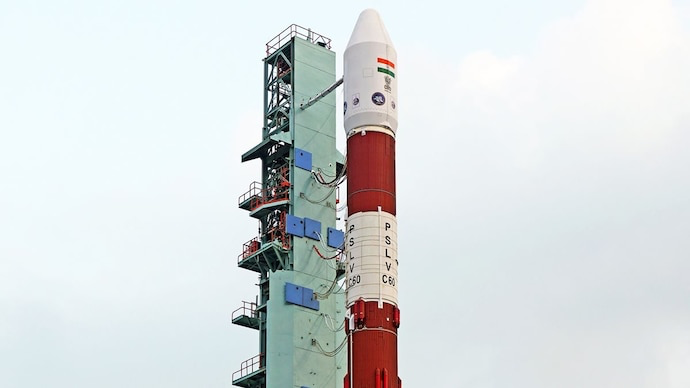Context: ISRO’s PSLV is set to launch two satellites, SDX01 and SDX02, into a 476-km circular orbit in the first week of January to carry out the Space Docking Experiment (SpaDEx), marking India’s entry into the select group of nations that have mastered Space Docking.

What is PSLV-C60 SpaDeX Mission?
• The PSLV-C60 SpaDeX Mission is a significant milestone designed to showcase in-space docking and undocking technology.
• This mission will make India the fourth country globally to achieve space docking, joining the ranks of the U.S., Russia, and China.
Objective:
• To showcase the docking, undocking, and rendezvous abilities of two satellites in low-Earth orbit (LEO).
• Enable power transfer between docked spacecraft, a crucial capability for upcoming space missions.
Satellites:
• SDX01 (Chaser): Fitted with a High-Resolution Camera (HRC).
• SDX02 (Target): Includes a Miniature Multispectral Payload (MMX) and a Radiation Monitor (RadMon).
Configuration
• The satellites will be launched aboard the Polar Satellite Launch Vehicle (PSLV-C60) in a core-alone (CA) configuration, which means without the use of strap-on boosters.
• They will be deployed into a 476-km circular orbit with an inclination of 55°.
Post-Docking
• Following the docking demonstration, the satellites will carry out independent missions for two years, focusing on imaging, natural resource monitoring, and radiation environment research.
Significance
• This is a strategic move towards achieving several ambitious space goals, including:
• Preparing for the Gaganyaan human spaceflight mission
• Facilitating the Chandrayaan-4 lunar sample return missions
• Advancing the development of the BharatiyaAntariksh Station (BAS), India’s planned space station.
| What is Space Docking?Space docking is the process in which two spacecraft in orbit meet and physically join to form a single unit. It is a highly intricate and precise maneuver crucial for advanced space missions. Key Steps in Space Docking: Rendezvous: Bringing two spacecraft into the same orbit with minimal difference in distance and velocity. Docking: Creating a mechanical connection between the spacecraft using specialized docking systems. Power and Resource Sharing: After docking, the spacecraft can exchange power, fuel, or crew to support collaborative operations. |

